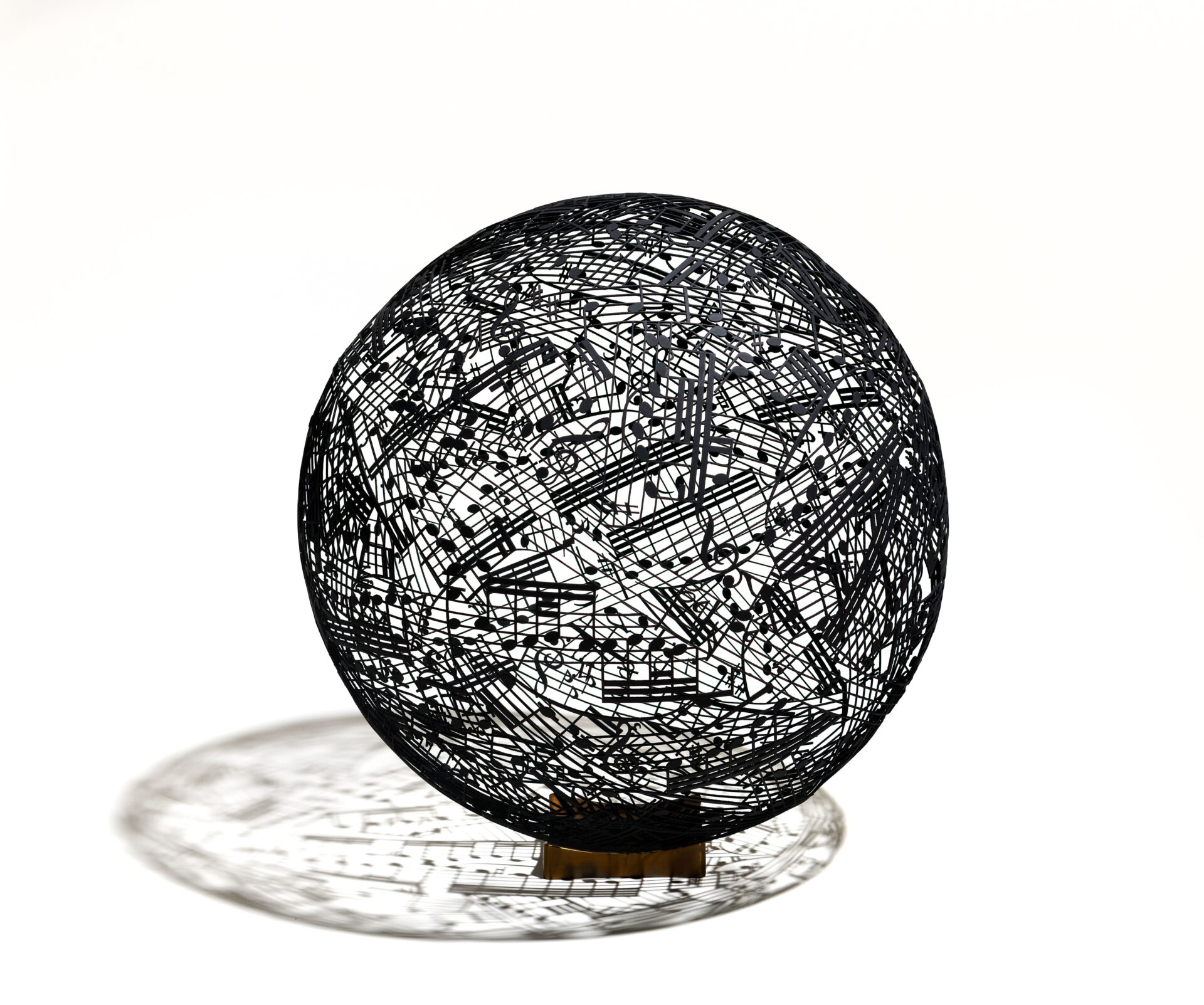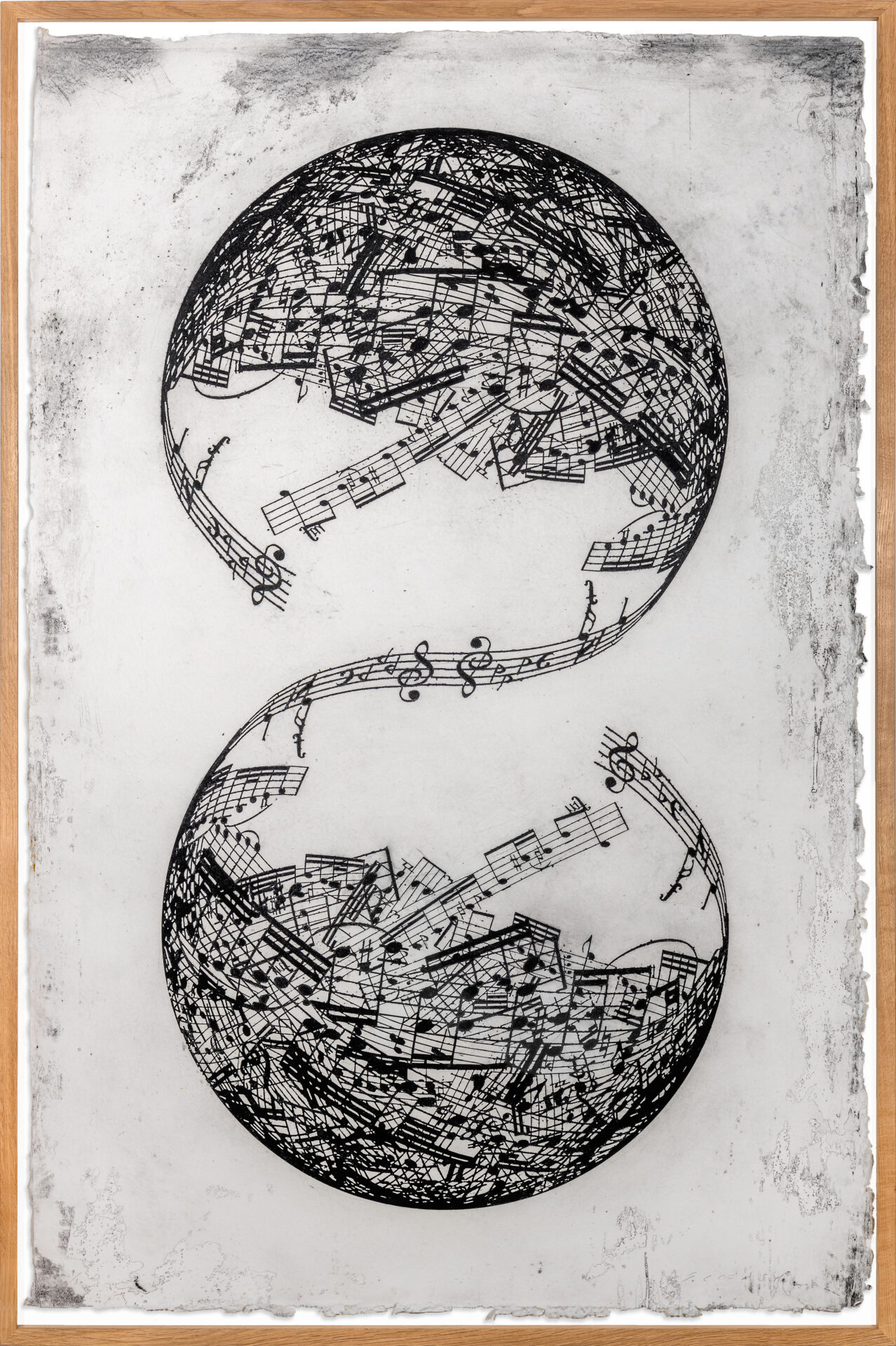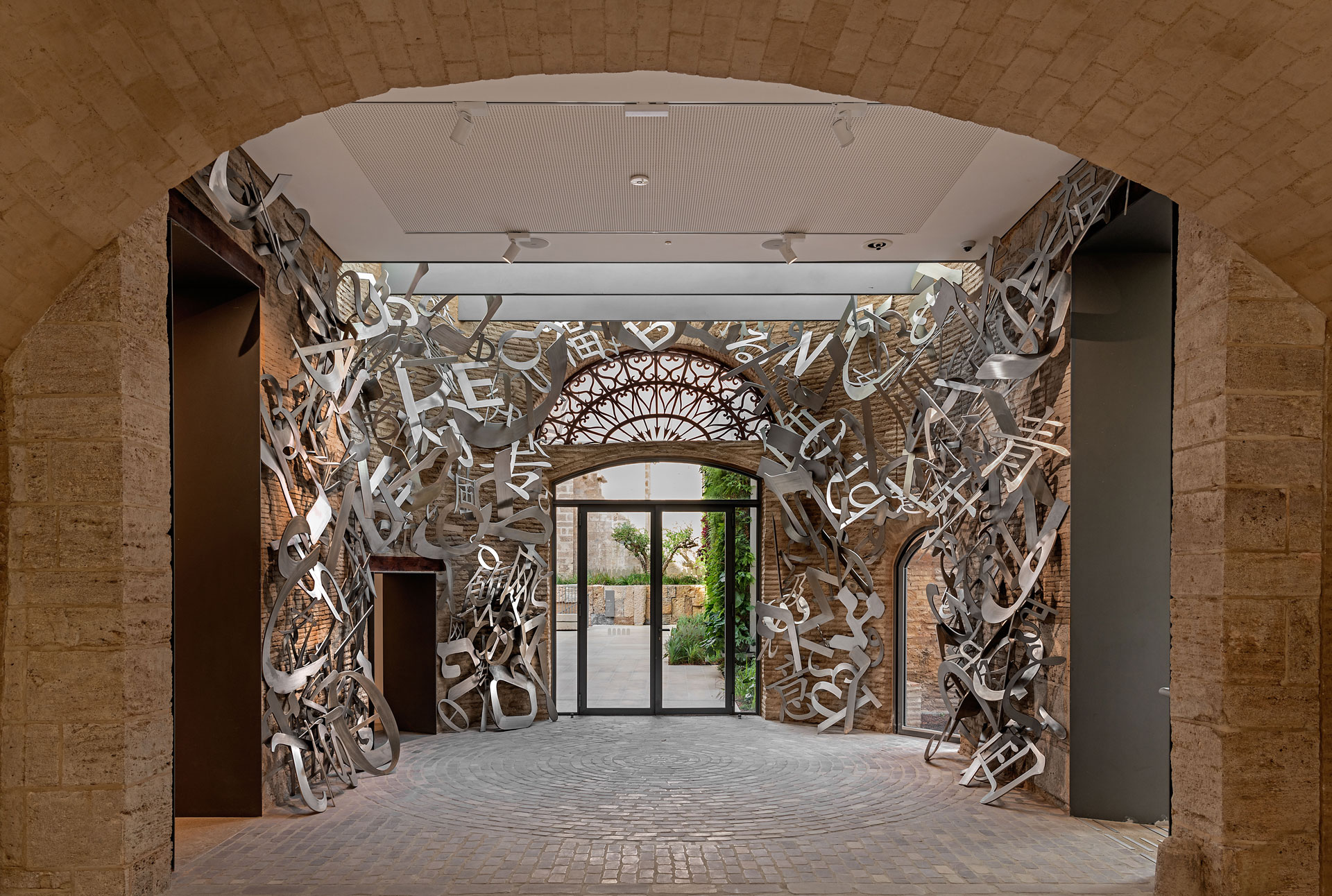Literature has always been a source of inspiration for Jaume Plensa. As the artist states, “I have a group of poet friends who, although they have not particularly influenced me through their work as a whole, have touched me deeply with a specific piece of their work “1. T.S. Eliot, William Shakespeare, Dante, Baudelaire, Goethe and Vicent Andrés Estellés are just some of the writers who have accompanied him throughout his life and who have served as inspiration for countless works.
But this literary influence is not limited to the artist’s readings, it also extends to the letters themselves which he uses to create his sculptures. Plensa began with the Latin alphabet and gradually incorporated other alphabets such as Hebrew, Arabic, Chinese, Japanese, Greek, Cyrillic, Korean and Hindi. For Plensa, each letter has a unique beauty, but all together they are a sign of the diversity of the world and the coexistence of different cultures. Plensa has used letters in many different ways, whether on curtains, gongs or the human body, which are perhaps his best-known works. The intersection of language with the human body is one of the foundations of Plensa’s work. As the artist explains, “a letter doesn’t look like anything, it’s a humble thing, but combined with others it forms words, and words form texts and texts, thoughts. It’s a bit like the idea of the foundation stone, around which the temple is built, then the city, the country, the continent and the universe “2.
When he was commissioned by Hortensia Herrero to carry out an intervention in the apse of the former Palacio Valeriola, now the Art Centre, Jaume Plensa turned to this world of letters to produce, for the first time, an installation which takes over a space that the artist has dubbed the navel of that centre. As Plensa himself explains: “This space captivated me from the beginning as a place to do something I had never done before”.3 So he created a second skin on the wall with his letters from various alphabets, through which he aims to show the diversity that exists in the world. The letters are made from 314 stainless steel, which is the same grade used in the Chrysler Building in New York, a skyscraper that has always fascinated him.
Hortensia Herrero’s relationship with Jaume Plensa goes back a long way, as he was one of the artists selected to exhibit his work at the City of Arts and Sciences in a series of three exhibitions organised by the Hortensia Herrero Foundation. His exhibition took place in 2019 and featured seven seven-metre heads, each weighing seven tonnes. One of the sculptures, Maria, was acquired by the Hortensia Herrero Foundation and the other, Silvia, by Mercadona and both have been installed in front of the La Cerámica Stadium in Vila-real.
Cities including London, Chicago, New York, Miami, Seoul, Singapore, Bordeaux and Tokyo, among many others, permanently host monumental sculptures by Jaume Plensa, making him one of Spain’s most internationally renowned artists. The Hortensia Herrero collection contains numerous works by Jaume Plensa. Below, we can see a selection of them.


